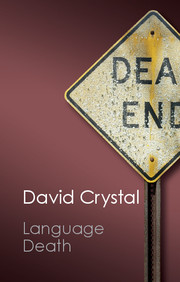Book contents
3 - Why do languages die?
Published online by Cambridge University Press: 05 November 2014
Summary
If people care about endangered languages, they will want something to be done. But before we can decide what can or should be done, we need to understand the reasons for the endangerment in the first place. Why, then, are languages dying, and in such numbers? And is the rate of language death increasing?
Languages have always died. As cultures have risen and fallen, so their languages have emerged and disappeared. We can get some sense of it following the appearance of written language, for we now have records (in various forms – inscriptions, clay tablets, documents) of dozens of extinct languages from classical times – Bithynian, Cilician, Pisidian, Phrygian, Paphlagonian, Etruscan, Sumerian, Elamite, Hittite … We know of some 75 extinct languages which have been spoken in Europe and Asia Minor. But the extinct languages of which we have some historical record in this part of the world must be only a fraction of those for which we have nothing. And when we extend our coverage to the whole world, where written records of ancient languages are largely absent, it is easy to see that no sensible estimate can be obtained about the rate at which languages have died in the past. We can of course make guesses at the size of the population in previous eras, and the likely size of communities, and (on the assumption that each community would have had its own language) work out possible numbers of languages. On this basis, Michael Krauss hazards that 10,000 years ago, assuming a world population of 5–10 million and an average community size of 500–1,000, there must have been between 5,000 and 20,000 languages. He opts for 12,000 as a middle estimate of the highest number of languages in the world at any one time. There are some 6,000 languages now. But no one knows how many languages have come and gone within this period, and how many new languages to allow for, to set off against the apparent loss of some 6,000. Nor do we know whether the rate of language change has been constant over these long periods of time, or punctuated by periods of rapid shift and decline, though the topic has been much debated.
Information
- Type
- Chapter
- Information
- Language Death , pp. 89 - 120Publisher: Cambridge University PressPrint publication year: 2014
